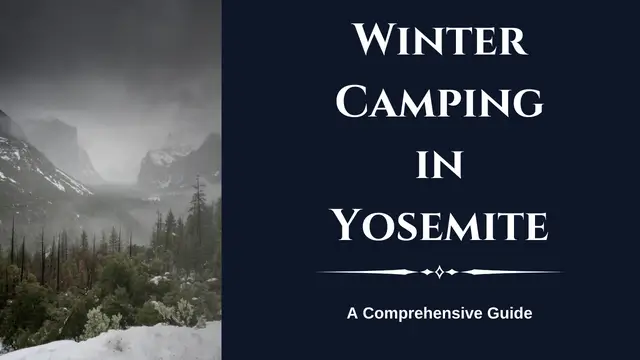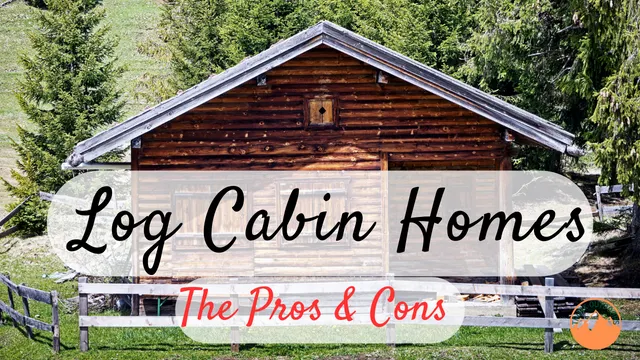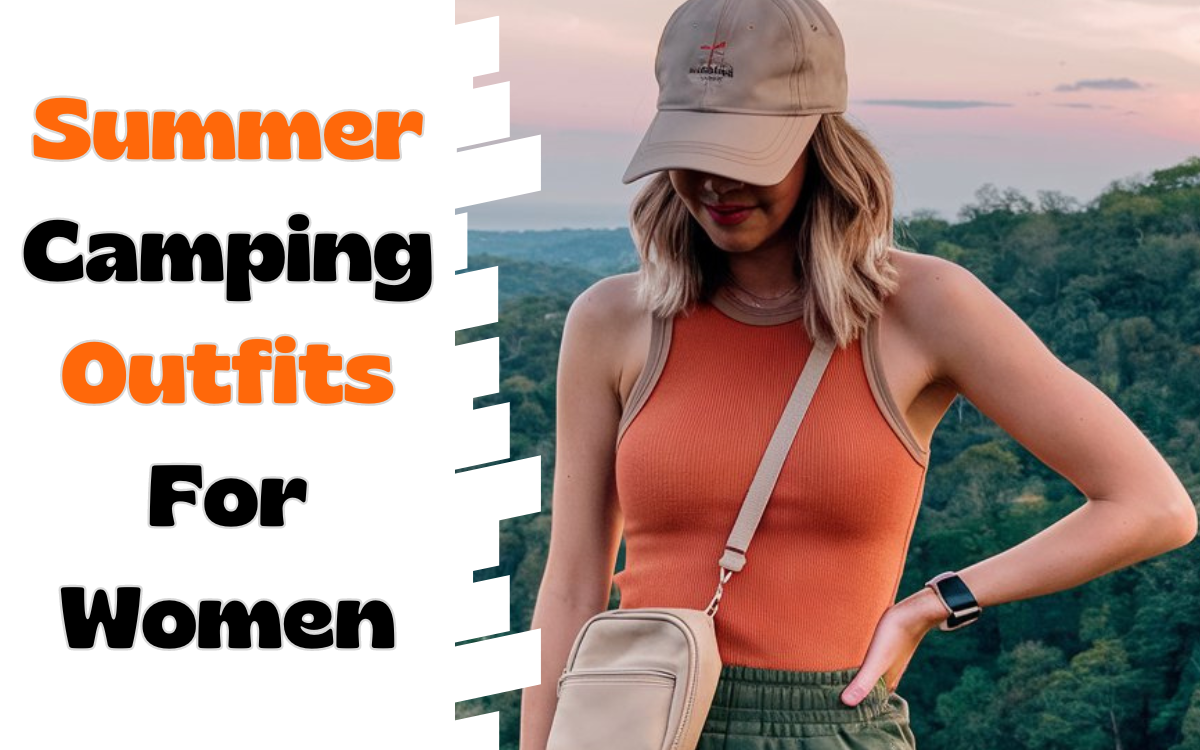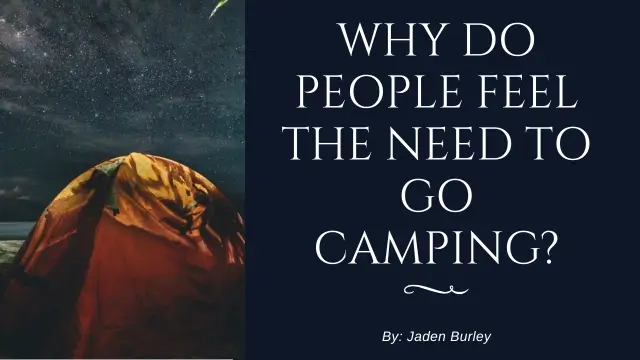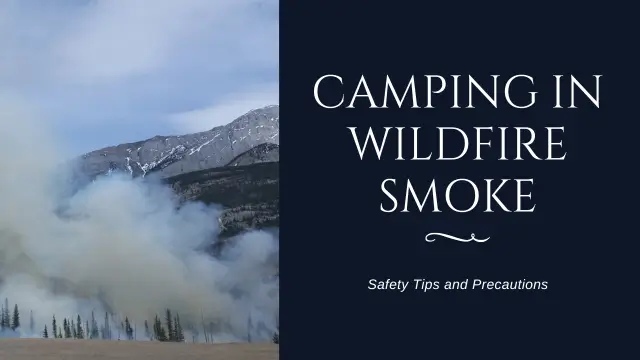How Hot Is A Campfire?
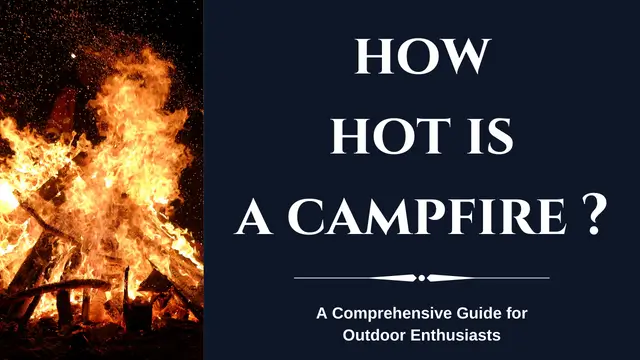
How hot is a campfire? The question that you will not give importance to until you are looking for warmth or want to cook during a camping trip.
Hey there, fellow campers! I’m Jaden, a seasoned outdoor enthusiasts, and today, we’re delving into the heart of every camping experience “the campfire”.
Campfires aren’t just cozy; they can vary in heat. Knowing this helps prevent accidents. Different wood, weather, and airflow affect temperatures.
Keep reading my guide on campfire temps to ensure your camping adventures are both safe and enjoyable.
How Hot is a Campfire?
Imagine this: you’re surrounded by the crackling warmth of a campfire under a starlit sky. But, have you ever wondered about the actual temperature?
In general, campfires can reach temperatures of up to 1500 degrees Fahrenheit (815 degrees Celsius).
- The hottest part of the fire is the base, where the wood is actually burning. The temperatures can reach up to 2000 degrees Fahrenheit (1093 degrees Celsius).
- The plume is slightly cooler; it can reach up to 600 degrees F (315 C).
- The air around the campfire is 300–500 degrees Fahrenheit (148–260 degrees Celsius). The further you go, the cooler it is.
General Warning: Always maintain a safe distance, use appropriate tools for tending the fire, and be cautious with flammable materials nearby.
What Do Different Colors Mean for Flame Temperature?
Now, let’s talk about the mesmerizing colors of a campfire. The hues— yellow, orange, red colors, and even blue—aren’t just for show. They reveal vital information about the flame’s temperature.
I’ll break down the science behind these colors and what they mean for your campfire experience.
- Dark Red: Dark red flames have a lower temperature, typically around 500 to 600 °C (900 to 1,100 °F).
- Dull Red: The dull red color in a campfire flame indicates a temperature range of approximately 600 to 800 °C (1100 to 1470 °F).
- Bright Red: Embers glow bright red at temperatures between 1650 and 1800°F (800 to 1000°C). The more intense the fire, the brighter the embers glow.
- Orange: Orange flames burn at 1800-2100°F (1000-1200°C) and are hotter than the core temperature of the flame.
- Bright Yellow: Bright yellow fire is very hot, with the tips of the flames being the hottest part. Temperatures range from 1200 to 1400°C (2100 to 2500°F).
- White: White flames are the hottest, reaching temperatures of 2500 to 2900°F (1400 to 1600°C). They are rare, but may be seen in large bonfires.
- Blue: Blue flame, often seen when burning natural gas with increased oxygen, has a temperature of 2600 to 3000°F (1450 to 1650°C).
Understanding these colors help you gauge the intensity of the fire and take appropriate precautions.
How Hot Should Your Campfire Be?
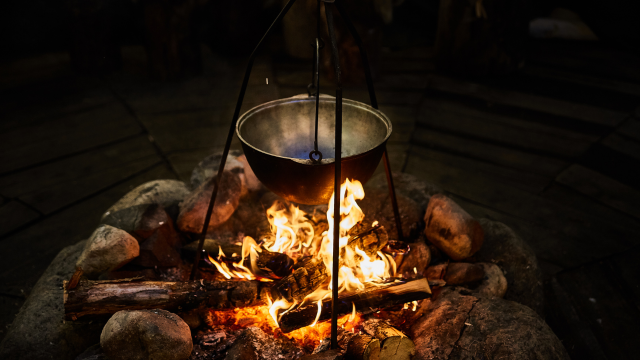
Whether you’re huddling for warmth or cooking up a storm, knowing the ideal campfire temperature is key. The perfect campfire temperature will vary depending on its purpose.
- To cook food: 700-1000 degrees Fahrenheit ( 370°C – 550°C)
- To provide warmth: 400-600 degrees Fahrenheit (205°C – 315°C)
- To create a social atmosphere: 300-400 degrees Fahrenheit (150°C – 205°C)
Cooking Over a Campfire
Ah, the joy of cooking in the great outdoors! I’ll share practical tips on cooking over a campfire, including the ideal temperature for different recipes.
From marshmallow roasting to preparing a hearty camping meal, you’ll be the campfire chef in no time.
- Low heat: Ideal for cooking food that requires slow and steady heat, such as stews, soups, and chili. The temperature range for low heat is between 200°F to 300°F.
- Medium heat: Ideal for cooking food that requires moderate heat, such as sauteed vegetables, grilling chicken, and roasting meat. The temperature range for medium heat is between 350°F to 400°F.
- High heat: Ideal for cooking food that requires high heat, such as searing steak, stir-frying vegetables, and baking pizza. The temperature range for high heat is between 450°F to 550°F.
Can a Campfire Melt Metal Utensils and Cookware?
Yes, a campfire can melt metal utensils and cookware. Avoid placing metal utensils or cookware directly in the flames and use long-handled utensils to protect your hands.
- Aluminum: Aluminum is the most likely metal to melt over a campfire, as it has a relatively low melting point “660 degrees Celsius (1,220 degrees Fahrenheit)“. If you must use aluminum cookware, be sure to keep it away from the hottest part of the fire and avoid leaving it unattended.
- Copper: Copper is also a relatively soft metal, so it can be susceptible to melting over a campfire at 1,085 degrees Celsius (1,985 degrees Fahrenheit). If you use copper cookware, be sure to use it on a lower heat setting and keep an eye on it at all times.
- Iron: Iron is a more durable metal than aluminum or copper, but it can still melt over a campfire at 1,538 degrees Celsius (2,800 degrees Fahrenheit). If you use iron cookware, be sure to preheat it before adding food and avoid cooking over a high heat setting.
- Stainless steel: Stainless steel is the most durable metal of the four listed above and is less likely to melt over a campfire with a melting point of 1,450-1,510 degrees Celsius (2,642-2,750 degrees Fahrenheit). However, it is still important to use stainless steel cookware on a lower heat setting and avoid leaving it unattended.
The Factors That Affect Your Campfire’s Heat Level
Let’s dive into the three factors that influence how hot your campfire gets. From the type of wood you use to the size of the fire and even the oxygen supply, understanding these elements will empower you to master the art of fire-tending.
1. Fuel Type
Not all woods are created equal when it comes to campfires. Discover in the next section which wood types burn the hottest and longest, so keep reading to ensure you get the most out of your campfire experience.
2. Fire Size
Campfire size matters for warmth and safety. Bigger fires produce more heat, but they’re also more dangerous, so avoid them as much as you can.
For a cozy solo fire, aim for a diameter of 1-2 feet. For a communal blaze, 3-4 feet is ideal. Keep the fire height below 3 feet to avoid sparks and embers flying into the air.
3. Oxygen Level
The often-overlooked element—oxygen—plays a crucial role in your campfire’s heat. Here are some tips for optimizing oxygen flow to your campfire:
- Build your campfire in a well-ventilated area. Avoid building it under trees or in other areas where there is little airflow.
- Stack your firewood loosely. This will allow air to circulate and help your fire burn more efficiently.
- Use dry wood. Wet wood will produce smoke and reduce the amount of oxygen that can reach the fire.
- Don’t overload your campfire. Too much wood will smother the fire and prevent it from getting enough oxygen.
- Use a fire fan to blow oxygen onto your fire. This can be especially helpful when you’re trying to get a fire started or when you need to boost the heat.
Which Wood Burns the Hottest?
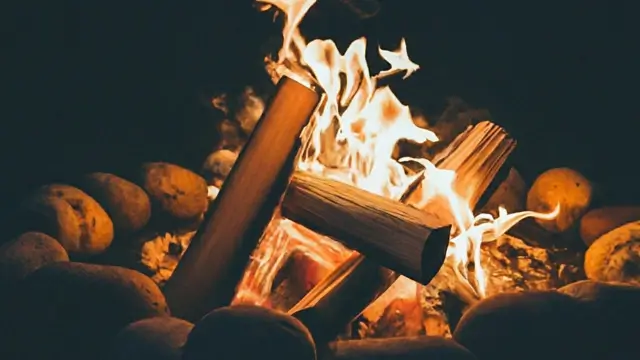
Not all woods are created equal when it comes to campfires. Discover which wood types burn the hottest and longest, ensuring you get the most out of your campfire experience.
- Hardwoods burn hottest and longest. This is because they are denser and have more energy content than softwoods. Some of the hottest burning hardwoods include oak, hickory, and maple. These woods are also known for producing long-lasting coals.
- Softwoods, on the other hand, burn brighter but for a shorter period of time. Some common softwoods include pine, fir, and cedar. Softwoods are also more likely to produce sparks and popping, which can be a hazard.
Read more about: The Best Wood For A Campfire
Conclusion
There you have it, my fellow outdoor enthusiasts! A comprehensive guide to the temperature of a campfire, tailored just for you.
Stay safe and follow all safety guidelines; keep those flames roaring; and make your camping adventures truly unforgettable. Until next time, happy camping!
Related Topics
How To Start A Fire When Everything Is Wet?
Starting a Fire Without a Lighter

